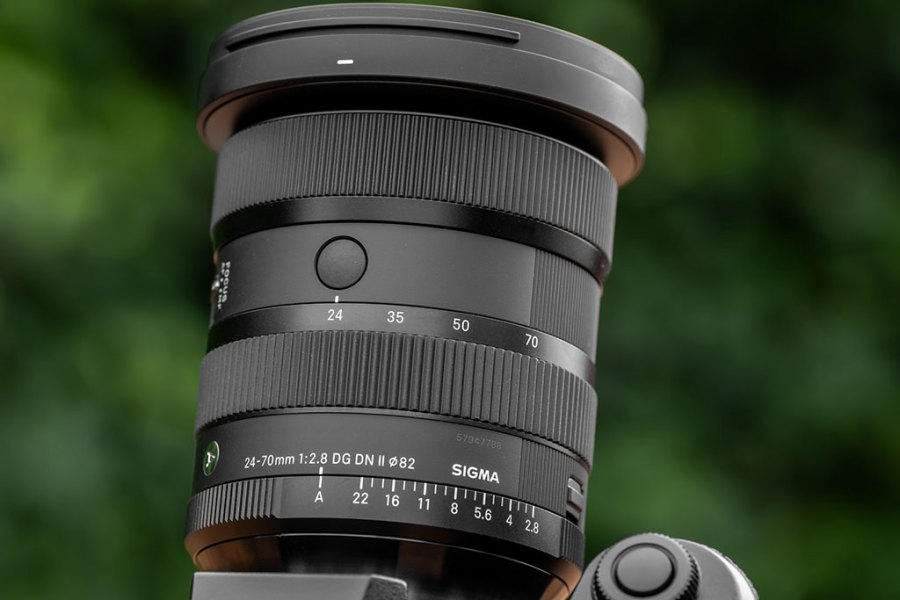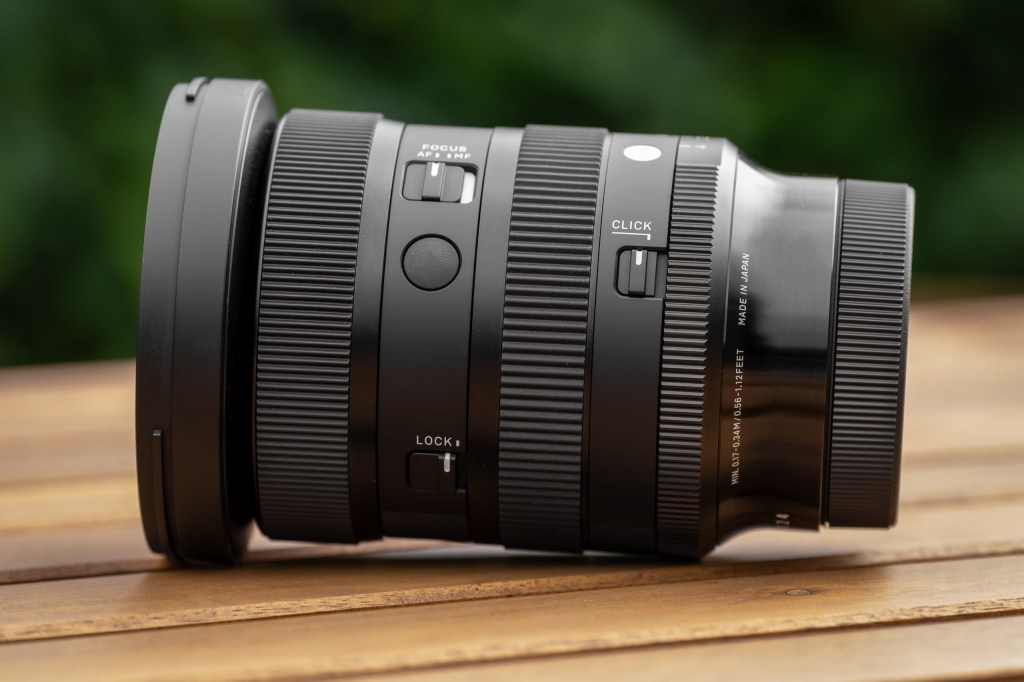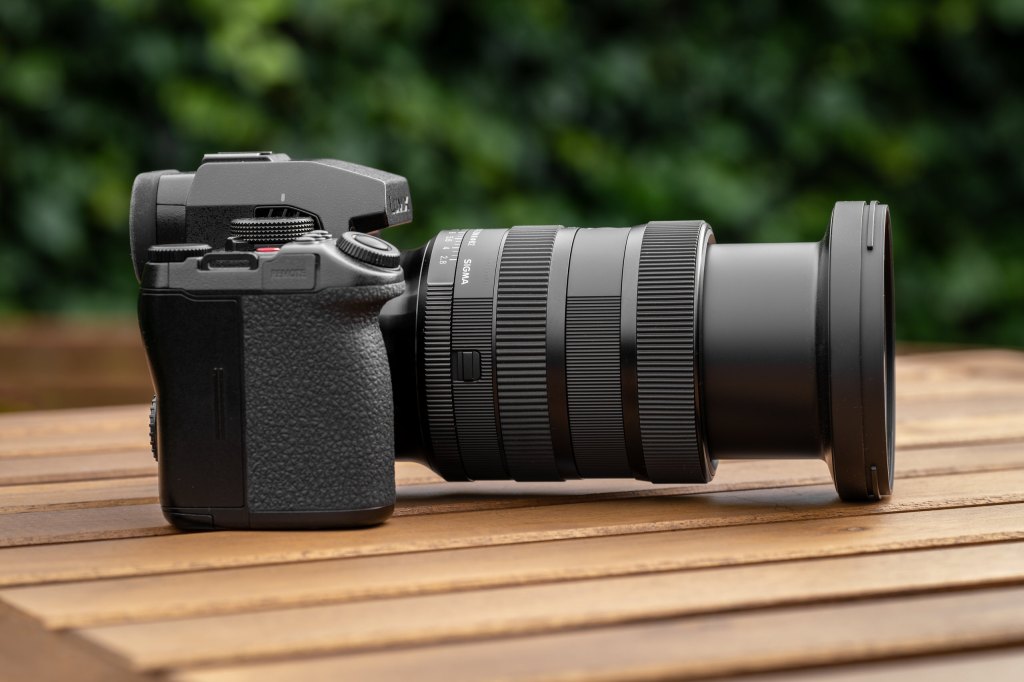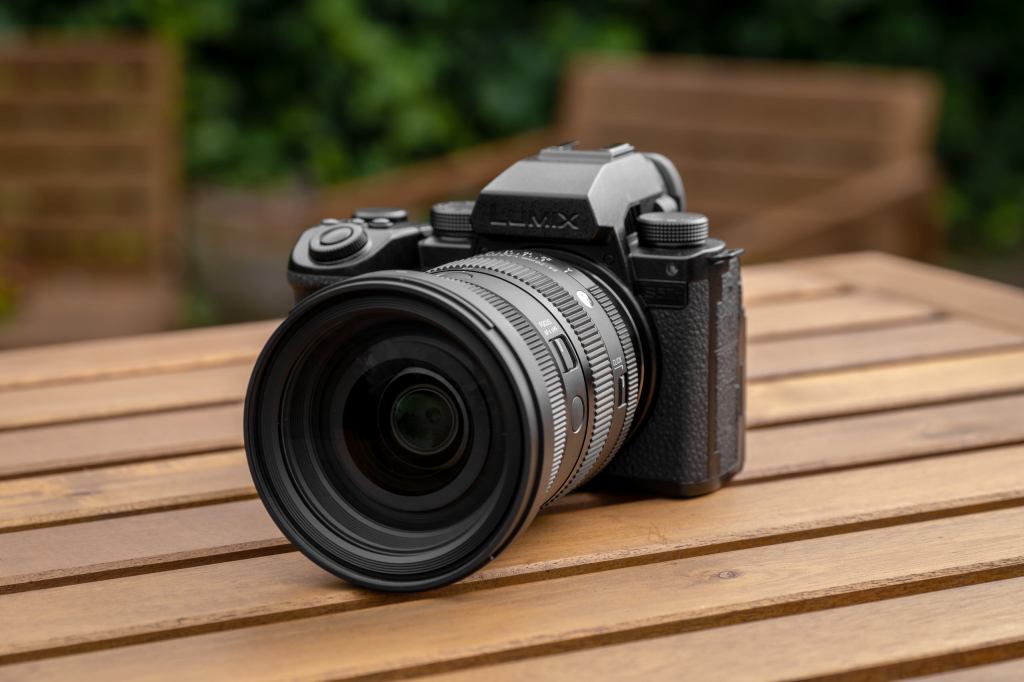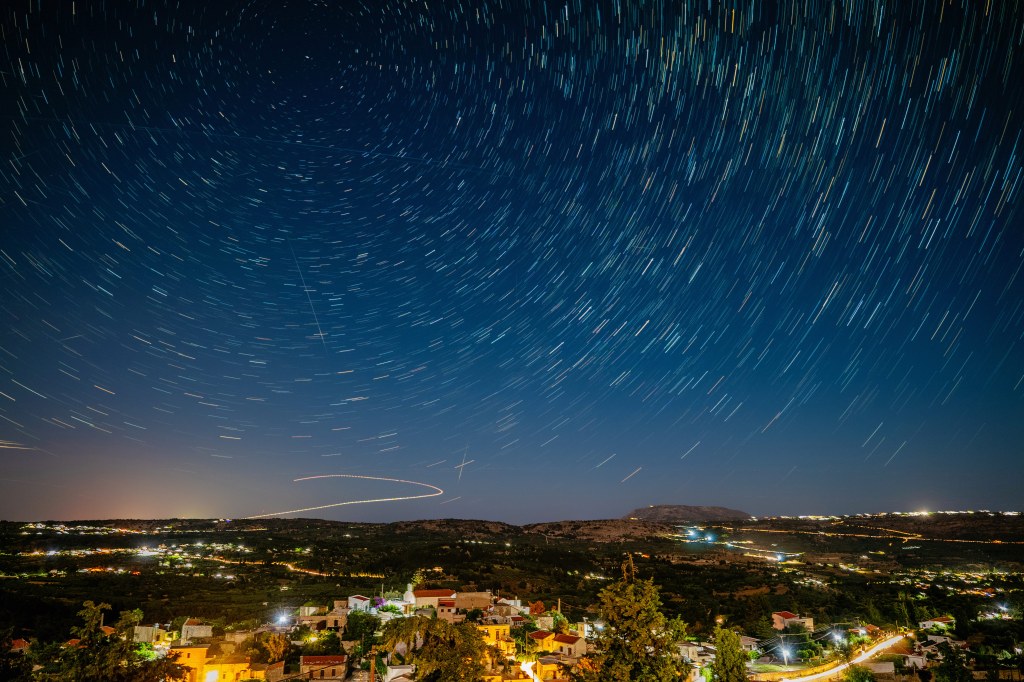Amateur Photographer verdict
A real workhorse in a smaller and lighter package with improved resolution and overall sharpness. It is a joy to use, not to mention that it’s also reasonably priced.- Sharp and detailed throughout the range
- New motor brings faster auto focusing
- Smaller and lighter than previous model, and cost
- You’ll need 82mm filters
- No optical stabilisation, but the host cameras have great systems
I’m not sure how easy it is to get excited by Sigma’s new 24-70mm F2.8 DG DN ll Art lens. We’ve been using this type of standard zoom lens since time began, and while they’ve been getting better and better ever since, these workhorse lenses are hardly thrilling. There’s no whizz or buzz about moderate focal lengths and a sensible wide’ish aperture.
These standard zooms are like a pair of practical work shoes – they’re not sporty, they aren’t daringly fast and they don’t take you anywhere you haven’t been before. However, when you are on your feet all day you come to really appreciate a pair of comfortable work shoes. You aren’t going to wear them clubbing or when hanging out with your friends, but by 5pm on Friday you’ll be extremely grateful for them and you’ll value every little comfort they bring.
There is, actually, a whole lot to be excited about with this lens. It may lack drama, but the prospect of a first class and reliable lens that covers most of the focal lengths we might need for a day of general shooting is highly attractive. Just the idea that Sigma may have applied all its latest improvements to it makes this updated 24-70mm f/2.8 lens interesting on its own, as all the recent Sigma Art lenses we’ve reviewed have been outstanding. And the thought that we might be able to use this wide open at all its focal length settings and get crisp results means we might perhaps view it as a whole series of pretty exciting lenses in one package.
Sigma 24-70mm F2.8 DG DN II Art – Features
This ‘standard’ zoom delivers the photographer a collection of very useful focal lengths, taking in the 24mm, 28mm, 35mm, 50mm and 70mm common lenses we all might regularly use. With its f/2.8 maximum aperture, low light shooters might think it doesn’t compare well to the f/1.8 and f/1.4 apertures we often see in fixed focal length lenses with some of these angles of view, but that’s part of the price of a zoom. However, for most depth-of-field purposes, f/2.8 can still be considered a pretty fast aperture that will throw backgrounds into a blur quite nicely.
Sigma’s new optical and mechanical design scheme has allowed this new 24-70mm to lose both weight and bulk, with just under 100g melted off and a few mm shaved from the length at the wide end but a more significant 40mm saved at the longest setting. We still have 19 elements in 15 groups though, but the make-up of the optical path is altered somewhat by the inclusion of two additional aspherical elements – one directly behind the aperture and the other second from last in the sequence. These are the key to the weight and size loses, and may well contribute to improved resolution across the frame, but especially in the corners.
The lens continues to use an 11-bladed iris, and has a minimum aperture setting of f/22. Close focusing is slightly improved to 17cm (from 18cm) at the wide end, and to 34cm (from 38cm) at the long end, while the filter thread remains unchanged at 82mm. This slightly wider front diameter might feel disappointing to those with a collection of 77mm, or smaller, filters, but it’s useful to help avoid mechanical vignetting while using thicker filters – like variable NDs – when shooting at 24mm.
Sigma 24-70mm F2.8 DG DN II Art – Build and handling
Unsurprisingly, Sigma has come a long way since its first AF 24-70mm f/2.8 from the early years of this century, but it is surprising how far the company has come in the two years since its original DN DG model was launched. In that time the company has introduced new AF systems, and new standards for the features its lenses carry and by which they are designed. If you have the original model you will note that this version offers more switches and buttons around the barrel that present users with some additional functionality.
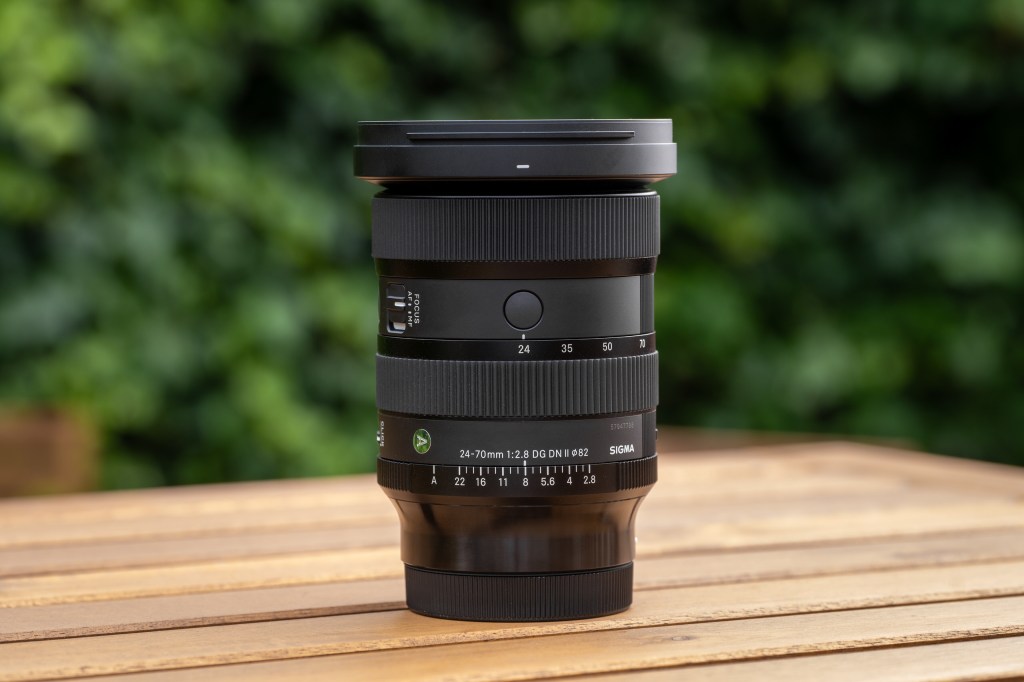
As is the case with the latest Sigma Art lenses, we now have an aperture ring, which we can de-click to adapt it for smooth and silent rotation. A further new switch allows us to lock that aperture ring in or out of the (A)uto position, while a new function button on the top of the barrel joins the previous one on the side to give us easier access when shooting upright. The zoom lock slider that holds the lens in the 24mm position isn’t new, but I don’t remember being able to override it with a determined turn of the zoom ring in previous models. If this is a new feature it’s very cool, as we don’t have to manually unlock the zoom ring when we are in a hurry. If it’s an old feature that I missed before, it’s still cool.
In general the lens is very nice to use, and it made itself very much at home on the bulky Lumix S1R and the smaller S5ll – on both it felt balanced and comfortable. I like the dramatically tapered section of barrel close to the mount where spare fingers can rest and make use of an extra gripping point. The lens is very nicely made too, and feels as though it will last a long time. Zoom and focus rings turn well, and the aperture ring is as satisfying to use whether clicked or de-clicked.
Sigma 24-70mm F2.8 DG DN II Art – Autofocus
Reaction times and the speed of travel are both beneficiaries of Sigma’s new High-response Linear Actuator (HLA) motor that drives the AF system. I found it excellent and equally happy with the contrast detection system of the Panasomic Lumix S1R as it is with the phase detection of the S5ll. When the subject is found by the camera the lens zips into focus, and tracking moving objects works as well with this lens as it does with Panasonic’s own modern lenses. I seem to remember the previous model hindered AF a little, but that is no longer an issue.
Sigma 24-70mm F2.8 DG DN II Art – Image Quality
It’s the nature of zooms that there will be some compromise when you look closely enough, but with this 24-70mm F2.8 DG DN Art ll, Sigma has worked very hard to reduce the effects of that compromise. Resolution, especially, is excellent throughout and we can be certain of detail right across the frame at all apertures and focal length settings. As always, the central aperture settings are the best – around f/4 to f/8 – but shooting at f/2.8 will produce results that all but the pickiest will be very happy with. I am usually one for lingering in the wider part of the range, but aiming this lens at landscapes during this review I found myself stopping down a lot, and found that even at f/22 we get loads of detail – and very attractive sun stars.
There is some minor vignetting but not enough to become a proper problem. Where we’d expect it in the wider settings corners are nice and bright, but in distant scenes at 70mm some moderate darkening will need to be cleaned up if it bothers you. Chromatic aberration is hardly worth mentioning, flare quite hard to induce and I found Camera Raw more likely to introduce distortion with its automatic profile than we are to encounter it with the mode set to Manual.
The f/2.8 maximum aperture is certainly wide enough to give us some nice shallow depth-of-field right from the middle of the zoom range, and the optical configuration combined with the 11-bladed iris give us attractive smooth transitions from focus to out-of-focus.
You will not be disappointed.
Sigma 24-70mm F2.8 DG DN II Art – Verdict
It’s hard to find anything but praise for this lens. It’s a joy to use and the pictures it produces are a joy to look at – from a technical point of view at least. It covers most of the focal lengths we’d need for a regular day’s shooting, it has a pretty fast maximum aperture, and it doesn’t cost very much in comparison to its competition. Sigma has introduced a clickless aperture ring so we can adjust apertures during filming without disturbing the soundtrack, and actually the smooth rotation suits shooting stills equally well. There’s nothing not to like. Oh, and it’s reasonably small and lightweight.
Some might be disappointed that Sigma doesn’t add its Optical Stabilisation system in this lens, but the cameras it’s designed for have excellent in-body systems of their own that are more than capable of dealing with these focal lengths. In 500mm lens it’s a different story, but a 24-70mm doesn’t really need it.
Perhaps the only frustration I faced while using this lens was a frequent desire for a longer reach at the telephoto end. I’ve become accustomed to Panasonic’s Lumix S Pro 24-105mm and find that range better when people are involved. But then again, that lens has a maximum aperture of f/4. If Sigma’s engineers are listening I hope they won’t think me greedy for saying that I’d like a 24-105mm F2.8 DG DN Art next, please.

SIGMA 24-70mm F2.8 DG DN II Art – Full specifications
| Price | £1179 |
| Filter Diameter | 82mm |
| Lens Elements | 19 |
| Groups | 15 |
| Diaphragm blades | 11 |
| Aperture | f/2.8 – f/22 |
| Minimum focus | 17-34cm |
| Length | 120.2mm |
| Diameter | 87.8mm |
| Weight | 745g |
| Lens Mount | Sony E (full-frame) |
| Included accessories | Caps, hood, case |
Related reading:
- New Sigma 28-45mm F1.8 DG DN Art coming soon!
- Sigma 70-200mm f/2.8 DG OS HSM Sport review
- Sigma 50mm F1.2 DG DN Art review – all the bokeh, half the price
Follow AP on Facebook, Twitter, Instagram, YouTube and TikTok.

